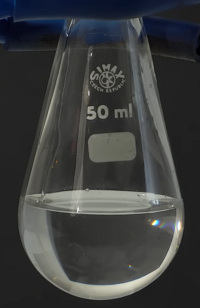
Photo from wikipedia
The title compound, [systematic name: 5-(trifluoromethyl)pyridine-2-carboxylic acid monohydrate], C7H4F3NO2·H2O, is the acid hydrate of a pyridine with a carboxylic acid group and a trifluoromethyl substituent situated para to one another… Click to show full abstract
The title compound, [systematic name: 5-(trifluoromethyl)pyridine-2-carboxylic acid monohydrate], C7H4F3NO2·H2O, is the acid hydrate of a pyridine with a carboxylic acid group and a trifluoromethyl substituent situated para to one another on the aromatic ring. The molecule forms a centrosymmetric water-bridged hydrogen-bonding dimer with graph-set notation (12). The dimers are further linked into a two-dimensional sheet via two longer intermolecular hydrogen-bonding interactions between the second hydrogen atom on the bridging water molecule and both a pyridine nitrogen atom and carbonyl oxygen. The trifluoromethyl groups extend out the faces of the sheet providing for F⋯F and C—H⋯F contacts between the sheets, completing the three-dimensional packing.
Journal Title: Acta Crystallographica Section E: Crystallographic Communications
Year Published: 2020
Link to full text (if available)
Share on Social Media: Sign Up to like & get
recommendations!